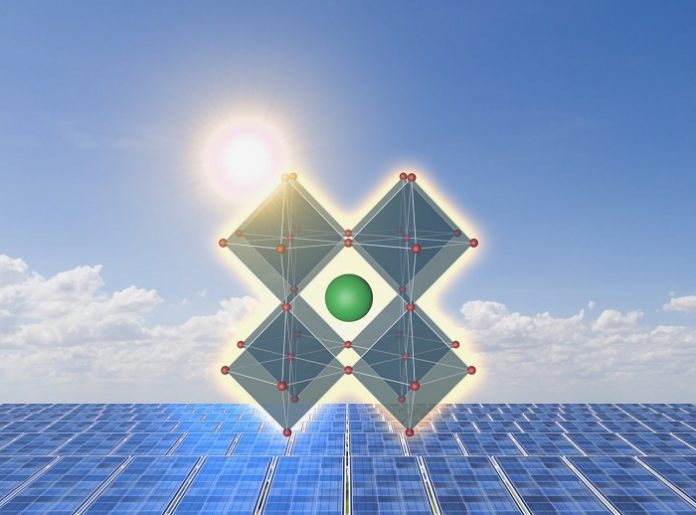
The potential of a class of materials called perovskites, to enable solar cells to better absorb sunlight for energy production, is widely known. However, this potential has yet to be fully realized, particularly under real-world operating conditions.
New research has revealed defects in a popular perovskite light absorber that impede solar cell performance. The researchers found a change in the nature and density of these ‘intragrain planar defects’ correlated with a change in solar cell performance.
The discovery by an international team of researchers, could lead to improved solar cell technology and provide another step towards reducing the use of fossil fuels for energy.
Perovskite light absorbers have the potential to improve the efficiency of established silicon solar cells by adding an additional layer that can absorb colors, or parts of the energy spectrum of sunlight, that current silicon solar cells cannot.
The highest possible performance of silicon solar cells is around 32 percent of capacity. This means only about 32 percent of the energy available in sunlight can be captured by silicon solar cells.
Placing such a perovskite solar cell on top of a silicon solar cell, known as a tandem solar cell, can effectively boost the overall performance of the stack up to roughly 42 percent.
Since small changes to the perovskite composition can tune the absorption spectrum of perovskite solar cells relatively easily, it is possible to create a perovskite solar cell that absorbs the higher energy light but lets the lower energy light pass through.
The research team used the imaging and diffraction protocol developed at the Monash Centre for Electron Microscopy (MCEM) to study the crystal structure of a range of perovskite solar cell materials in their pristine state, in the periodic crystal structure can have a strong influence on the material’s electronic properties.
Being able to map the local crystal structure of a thin film of perovskite light absorber and correlate this with the overall solar cell device performance provides exciting new insights into how device performance can be improved.